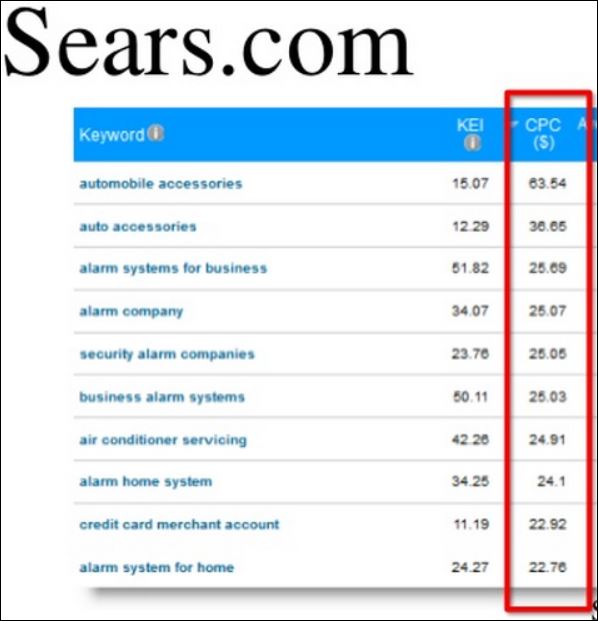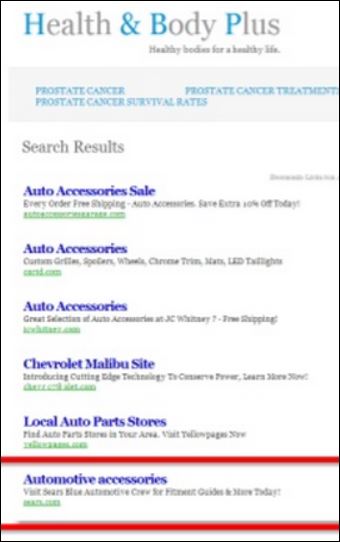If you are spending money on Pay-Per-Click advertising, you might unknowingly be wasting 10 percent, 20 percent — perhaps even 30 percent — of your ad budget to deceptive companies. My friend and colleague Dr. Augustine Fou has uncovered some very interesting insights that prove that many retailers are wasting millions of dollars on click-through fraud … and some ideas to combat it.
Fake Impressions, Fake Clicks, Fake Leads
“Many advertisers pay for ads on a CPM basis — every thousand times their display ads or video ads were shown,” Augustine said. “But spammers have developed networks of bots that are honed to deliver pageviews and therefore ad impressions that are robbing these brands blind.”
In a recent post, he explained how it works: “The bad guys first create networks of useless sites, where content is automatically assembled by scraping the web. They stick many display ads on each page. Then, they use the botnets to generate large quantities of traffic to these sites and push such ‘ad inventory’ into ad exchanges, for sale to brand advertisers. When the brand’s bidding systems gets fooled by this desirable target traffic, they bid to place the ad with the bad guys. A similar sequence of events happens for CPM based video ads.”
Solve Media’s quarterly Bot Traffic Market Advisory shows that between 20-30 percent of online ad traffic is fake. That level is between 11-14 percent for mobile ads.
“For CPC based advertisers who pay only for clicks, botnets are used as ‘click farms’ to generate clicks on keyword content-based ads, so the owners of these networks of fake sites can harvest the CPC based revenue.”
“Finally, in the lead generation space, where advertisers pay for ‘qualified’ leads of users who we assume filled out forms requesting more information about our products, bad guys can arbitrage the difference between what they make per lead and what it costs them to pay a worker in India to fill out forms with fake data.”
In this example from Sears, we see the amount of money being paid for a click:
Here is an example of a site created by the Bad Guys that really has nothing to do with the product or the keywords. Dr. Fou featured this in his slideshare presentation on Click Fraud:
By falsely generating impressions or clicks on these ads, the brand ad exchange agent is fooled into thinking it is a consumer-attracting site.
The Rise of Ad Exchanges
The trend that is enabling this increasing level of fraud is the advertising exchange.
On these exchanges, available ad placements are scanned and ads are placed automatically without human intervention within milliseconds. Ad exchanges already account for about 20% of display ad budgets and as this number has increased, so has the vulnerability of advertisers who are getting gamed by the unethical spammers.
Today, hundreds of billions of ads are placed every month and advertisers normally aren’t analyzing this massive data set to discover the extent of the fraud. They know it is happening and figure it into the cost of doing business.
But Fou believes this is no longer valid reasoning: “Ad impressions or clicks are worthless to advertisers if no human ever saw it or clicked it. Also, the lead forms filled in by workers paid to do so are not going to turn into paying customers. The ad fraud problem is so pervasive and deep-rooted, it is hard for most advertisers to even fathom. Even as the drumbeat grows louder and more industry initiatives are launched to combat this rampant fraud, those efforts are largely not sufficient.”
Fou said that most efforts to combat fraud are losing because every time a site is “black-listed,” new sites and millions of pages laden with algorithm-generated content and ads spring up in their place.
How to protect your ad budget
Trying to keep up with the fraudulent sites is probably impossible and Augustine suggest another way to look at the problem. “None of the approaches and technologies focus on positively identifying humans,” he said. “Instead of blocking the bad guys, maybe we should focus on human whitelisting techniques to reward the real sites that are delivering profitable target customers.
Dr. Fou recommends four steps to help safeguard your budget from fraud:
- Don’t assume that a lower ad cost is sufficient to account for ad fraud because you are still wasting your ad budget, and possibly a significant portion of it.
- Shift from CPM based ad impressions to performance type ads like CPC-based search ads where possible.
- Regularly monitor your analytics to check the bounce rate, dwell time, pages per visit, etc. of users coming to your site (bots don’t stick around to read anything).
- “Cookie” your visitors who have actually completed purchases (bots don’t complete purchases).
It seems that on the web wherever corruption can occur, corruption will occur. Staying one step ahead of corruption is the only way to succeed long-term.
What are you seeing out there? How are you addressing the ad scams?
Illustration courtesy BigStock.com
This post was written as part of the IBM for Midsize Business program, which provides midsize businesses with the tools, expertise and solutions they need to become engines of a smarter planet. I’ve been compensated to contribute to this program, but the opinions expressed in this post are my own and don’t necessarily represent IBM’s positions, strategies or opinions.






